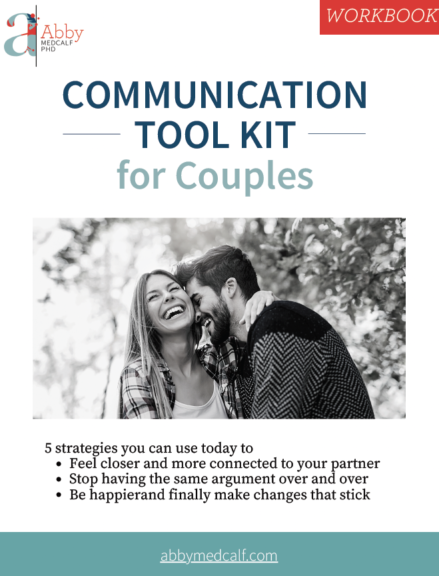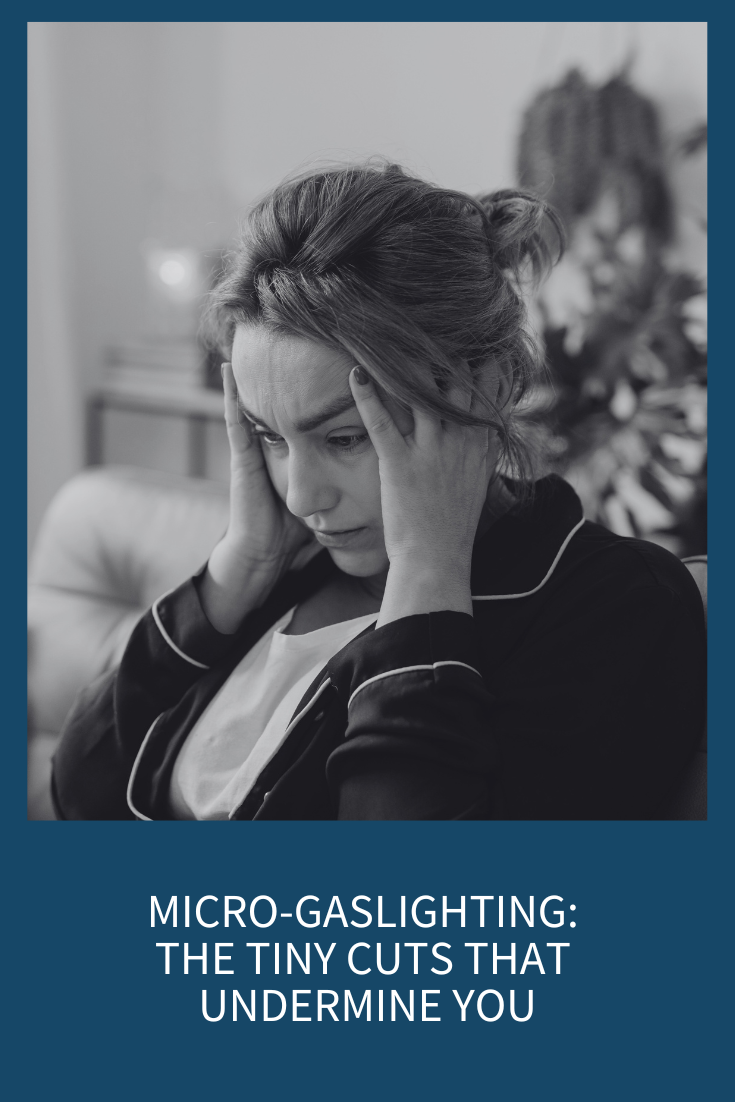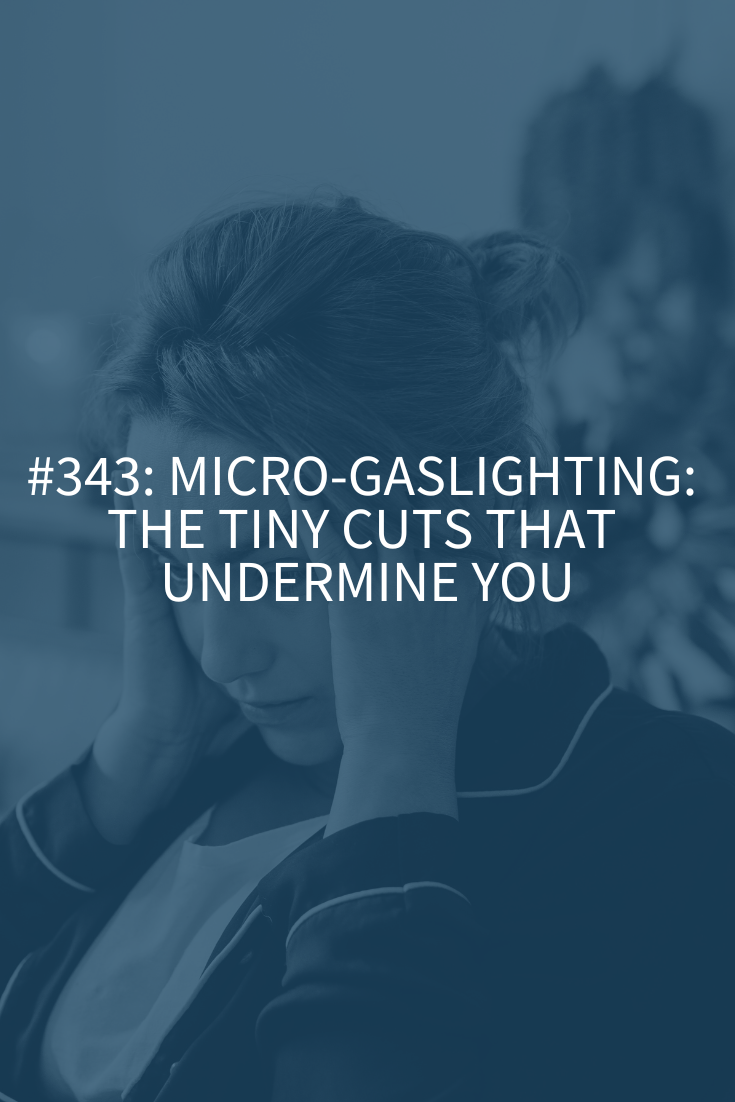
6-minute read
Want to listen to the podcast? Click here!
Can’t stop obsessing about your ex or worrying about your bills? Or maybe you can’t stop beating yourself up over that “stupid” thing you said at work the other day? You’re not alone! Lots of us just can’t stop those negative thoughts! Luckily, there’s a research-backed way to stop ruminating called “self-distancing.” Today I’m going to teach you all about self-distancing and my top four ways for putting it into practice.
OK, we’ve all been there: beating ourselves up over something we said or did; obsessing about a decision we made and worrying that it was the wrong one; your parents are fighting and you’re feeling anxious about what’s going on.
The good news is that this is a common problem, so researchers have been looking at this issue for a long time! And they’ve identified a technique called “self-distancing” that’s been proven to be effective at stopping all the rumination and negative thinking!
We know from the research that ignoring difficult feelings or just shoving them under the rug doesn’t work. However, just thinking about a negative event over and over doesn’t work either. When you do that, you get immersed in whatever happened and you feel bad. Maybe you had a fight with your partner. You remember what they said, what you said, how they reacted and, as you’re playing it over and over in your mind, all those same feelings arise and you get angrier and angrier (or sadder and sadder – insert yucky feeling here).
You need to be able to think about things and resolve them without getting all twisted up in negative emotions and the answer to that is something called self-distancing. Basically, self-distancing is being able to step back and view yourself and the situation more objectively. It’s like you’re a fly on the wall observing things instead of an active participant. Research shows that when you talk about something difficult and use a self-distanced perspective, you’re able to make better sense of your reactions and what happened, you have more emotional regulation and less pain, and it decreases the duration of negative emotions.
This same research also shows that even when you’re remembering the event much later, you’re less likely to have those negative thoughts about it!
When you practice self-distancing, you’re able to think about something yucky that happened in a way that actually offers you insights and some sense of closure. If that’s not enough to get you on the self-distancing band-wagon, there’s even more research showing how it helps you manage conflicts in your relationship, reduce angry and aggressive thoughts and behaviors, and help you problem-solve better!
So How Does it Look?
Let’s bring this into real life with an example of some work I did with two sisters. For the sake of anonymity, we’ll call them Elizabeth and Natalie. They came in with an old hurt they’d had for years that resulted in a classic “she said/she said” argument.
As they described the situation, each of them was completely focused on her own hurt feelings and rightness. Each of them was focused on their facts and all the particulars (she came at this time, then she said x, then she did y). Of course, they each had different versions of what exactly happened, from their own perspectives.
As you might imagine, this replay was getting us nowhere. So, I asked them both to take a deep breath. I asked them both to take a minute and think of why there were there. I reminded them that they love one another and that they were looking to find a way to feel better and resolve what happened. This, in itself, is a distancing technique – I was taking them out of the “inside” deep feelings of the situation and getting them to distance themselves a bit and remember the bigger picture.
Then I asked each of them, some self-distancing questions:
- “Elizabeth, why do you think you were so hurt by what happened?”
- “Natalie, how do you think these two people got to this point?”
- “Elizabeth, how did your anger affect Natalie?”
- “Natalie, how did your refusal to speak to Elizabeth affect her?”
It might sound simple, but a shift in perspective like this is very powerful.
Here are Four Great Tools to Practice Self-Distancing
1. What Would Someone Else Think?
Picture a loving friend watching this interaction or listening to your thoughts. what would they say or think?
You could also try to visualize the perspective of someone you admire (in psych terms we call this an exemplar), and then ask yourself what would they do in this situation. This works with little kids too. In another study, young kids who envisioned Batman in the middle of an upsetting situation and asked themselves, “What would Batman do?” were able to self-distance more effectively!
2. Take a Break
A great strategy is to take a break and get, literal, physical or mental distance from whatever’s bothering you or from an actual conflict. If you’re having some kind of emotionally charged argument with your dad or you notice you’re having an almost panic attack worrying about paying your bills, take a ten-to fifteen-minute break. Go wash your face, take a walk, physically leave where you are or watch a funny video on YouTube, but create some “distance” and a little time-out from whatever’s bothering you.
By stepping physically or mentally out of the distressing situation, you disrupt that negative momentum. From there you can take a breath and get some perspective.
3. Use He/She/They Instead of I
Make sure your internal dialogue doesn’t use the word “I.” In studies, when people said, “She thinks or Abby says” instead of “I think or I say” they still saw challenges but, instead of them feeling threatening and inducing anxiety, they were seen as resolvable and winnable.
So, instead of asking yourself, “Why am I worried about this?” ask yourself, “Why are you worried about this?”
4. What Would Your Future Self Say?
Another effective tool is to focus on your future self or what the researchers call temporal distancing. You might ask yourself, “How would I feel about this one week or one month from now?” Picture yourself ten years from now and ask him or her, “What are your thoughts about this situation?”
In the end, self-distancing is about increasing the psychological distance from your own self-centered perspective when you’re assessing something. It allows you to detach from emotional situations and helps you make more rational, effective decisions.
Resources
The Real Reason Why You Have Negative Thoughts (and 2 Things You Can Do About It)
Finally Stop Having Negative Thoughts
The Secret to Positive Thinking in All Your Relationships
The Simple Hack to Stop Your Negative Thoughts All Day Long
What Anxiety Really Is and How to Deal with It
Research
Kross and O. Ayduk, “Self-Distancing: Theory, Research, and Current Directions (Article in press).






